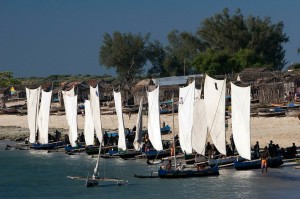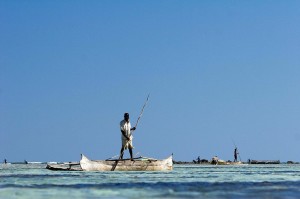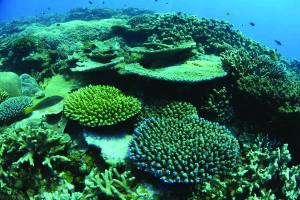WESTERN INDIAN OCEAN COMMUNITIES PLAY VITAL ROLE IN CONSERVATION
WESTERN INDIAN OCEAN COMMUNITIES PLAY VITAL ROLE IN CONSERVATION
An international team of researchers led by the University of York has carried out the first assessment of community-led marine conservation in the Western Indian Ocean.
The results, reported in the journal PLOS ONE, point to a revolution in the management of marine protected areas, with almost half of the sites – more than 11,000 km² – in the region now under local community stewardship.
Marine protected areas (MPAs) are zones of the seas and coasts designed to protect wildlife from damage and disturbance and managed typically by governments rather than by local communities. They are rapidly increasing in number as countries rush to meet international conservation commitments.

Lead author Steve Rocliffe, a PhD researcher with York’s Environment Department, said: “MPAs are vital tools for marine conservation but often fall short of their potential and can have negative impacts on local fishing communities.
“Against this backdrop, we’re seeing coastal communities across a vast swathe of the Indian Ocean taking more responsibility for their resources by setting up conservation zones known as ‘locally managed marine areas’ or LMMAs.
“LMMAs put people at the centre: it’s the fishers themselves who are making the management decisions, based on their needs, their priorities, and their traditional ecological knowledge.”

The study, which covers a region of 11 coastal and island states stretching from Somalia in the north to South Africa in the south, was supported by the Natural Environment Research Council (NERC), the Economic and Social Research Council (ESRC) and the John D. and Catherine T. MacArthur Foundation.
The inventory, which is a collaboration between the University of York, Blue Ventures Conservation and CORDIO, an East African research organisation, summarises information on 62 local initiatives and 74 MPAs, providing agencies, researchers and government officials with an important baseline against which to evaluate future efforts to expand marine conservation in the region.
The researchers assessed LMMAs in terms of geography, numbers, size and governance structures, comparing them with areas under government stewardship and evaluating their potential contributions towards Convention on Biodiversity targets to effectively conserve 10 per cent of marine and coastal ecological regions by 2020.

Dr Julie Hawkins, from York’s Environment Department, said: “LMMAs have proven to be a cost-effective, scaleable, resilient and more socially acceptable alternative to more traditional ‘top-down’ methods of marine resource management. They have also shown promise as a means to safeguard food security, address coastal poverty, and help coastal communities to adapt to climate change.”
Shawn Peabody of Blue Ventures Conservation, added: “We found that although locally managed marine areas are hampered by underdeveloped legal structures and enforcement mechanisms, they are emerging as a tool of choice in mainland Tanzania and Madagascar, where they cover 3.5 and 4.2 times more area than centrally managed MPAs respectively.
“The way forward now is to establish a network through which LMMA practitioners can share experiences and best practice.”
